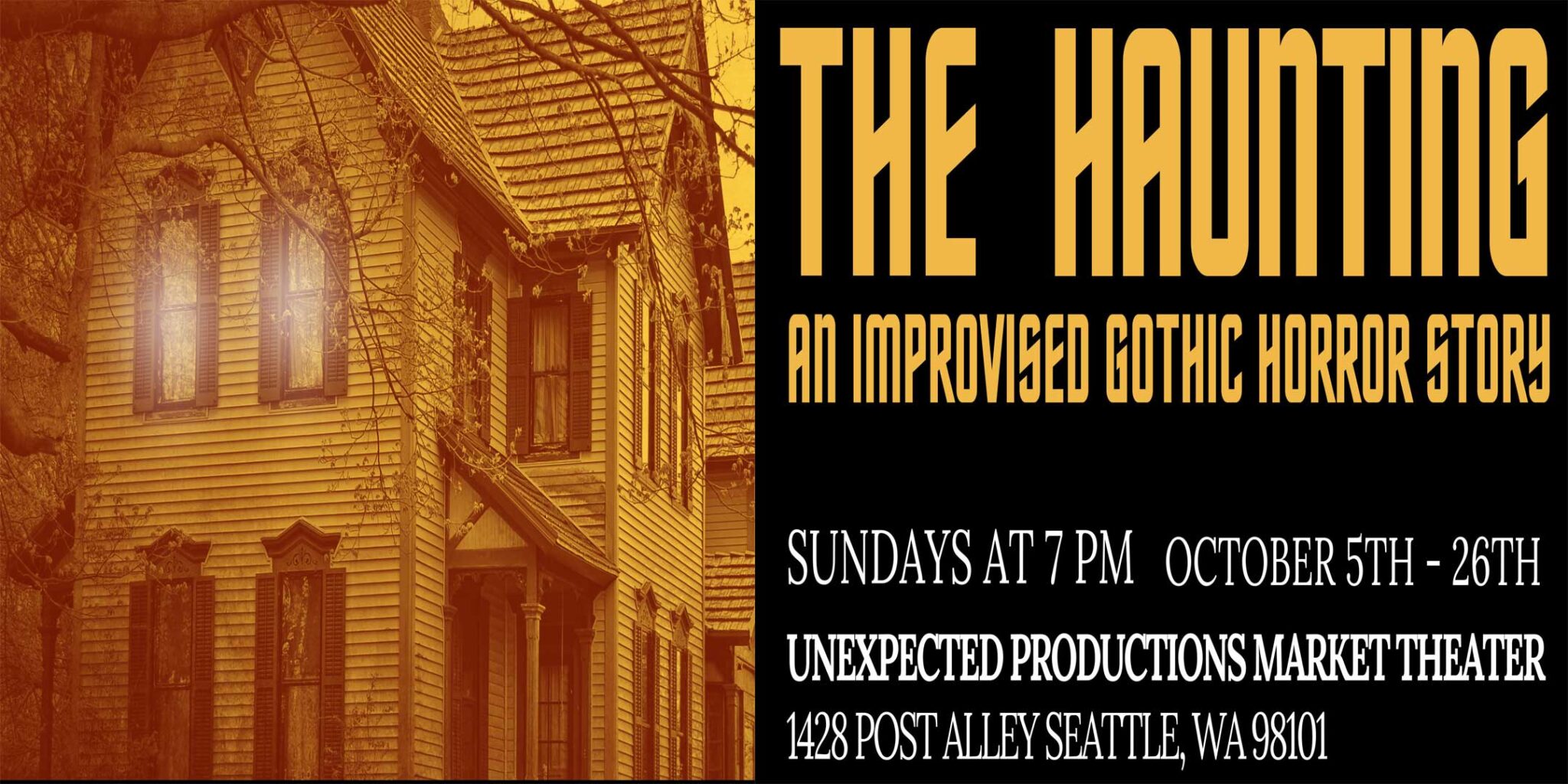
when Horror Yearbook – The Haunting captures the essence of classic gothic horror while breaking every storytelling convention. It unfolds inside a dimly lit manor where secrets breathe through every crack in the wall. Inspired by timeless tales of supernatural terror, this improvised story combines a grim atmosphere with a human fear of the unknown. The performance takes place in near darkness, with practical lighting effects that make the setting feel alive. Spectral whispers linger through the air as the story unravels. The Haunting does not rely on cheap jump scares but rather builds its terror through silence, shadow, and slow revelations. Each night offers a different story. The performers create a chilling narrative that feels personal, almost as if the house itself is speaking. The audience finds themselves trapped inside a living nightmare where the past is never truly buried.
The Haunting thrives inside a grand yet decaying manor that feels more like a character than a setting. Flickering candles illuminate the wooden floors and dusty portraits that seem to follow every movement. This stage invites the audience to step inside rather than just observe. The Haunting reveals its story through improvisation, so no two performances are ever the same. One night might feature a grieving widow haunted by whispers. Another might focus on a child’s toy that never stops moving. The unpredictability heightens the sense of dread. The house becomes an organism that feeds on the fears of those who enter. This approach transforms gothic horror into a living art form, something that evolves and breathes in real time.
Inside the manor, every sound carries weight. A single creak can send chills through the audience. The Haunting relies on silence to build unbearable tension. The absence of constant music or loud effects forces the mind to imagine horrors in the darkness. Small visual details like shifting shadows and faint movements create an illusion that something unseen is always near. These choices reflect traditional gothic techniques where what remains hidden is far more frightening than what is revealed. Viewers become hyper-aware of their surroundings, unsure where the next moment will lead. The darkness plays tricks on the senses, making each breath inside the manor heavier. This controlled environment turns fear into a shared experience, binding every member of the audience together in suspense.
“Simak juga: Thailand Crowned World’s Best Culinary Destination in 2025”
The story often centers on a family who moves into the abandoned house. As the night unfolds, they discover that they are not alone. The Haunting introduces characters who seem to have one foot in this world and another beyond. These figures whisper, vanish, and sometimes appear when least expected. Their presence feels unsettling because they are never fully explained. The performers hint at past tragedies but leave enough gaps for the imagination to fill. In gothic tradition, ghosts are not simply monsters but echoes of unresolved pain. The family’s fear mirrors the fear of the audience, blurring the line between fiction and reality. The Haunting uses this dynamic to create an atmosphere that grows colder with every passing minute.
The Haunting represents a new evolution in live horror performance. Instead of relying on scripts or special effects, it allows fear to grow naturally through improvisation and environmental design. This method transforms a stage into a place where reality bends and darkness speaks. It is a reminder that true horror lies not in what is seen but in what is felt when silence fills the room. Audiences leave the manor with a sense of having touched something ancient and restless. The Haunting proves that gothic horror can still unsettle modern audiences when it returns to its roots of atmosphere, emotion, and imagination.
This article is sourced from unexpectedproductions and for more details you can read at horroryearbook
Writer: Sarah Azhari
Editor: Anisa